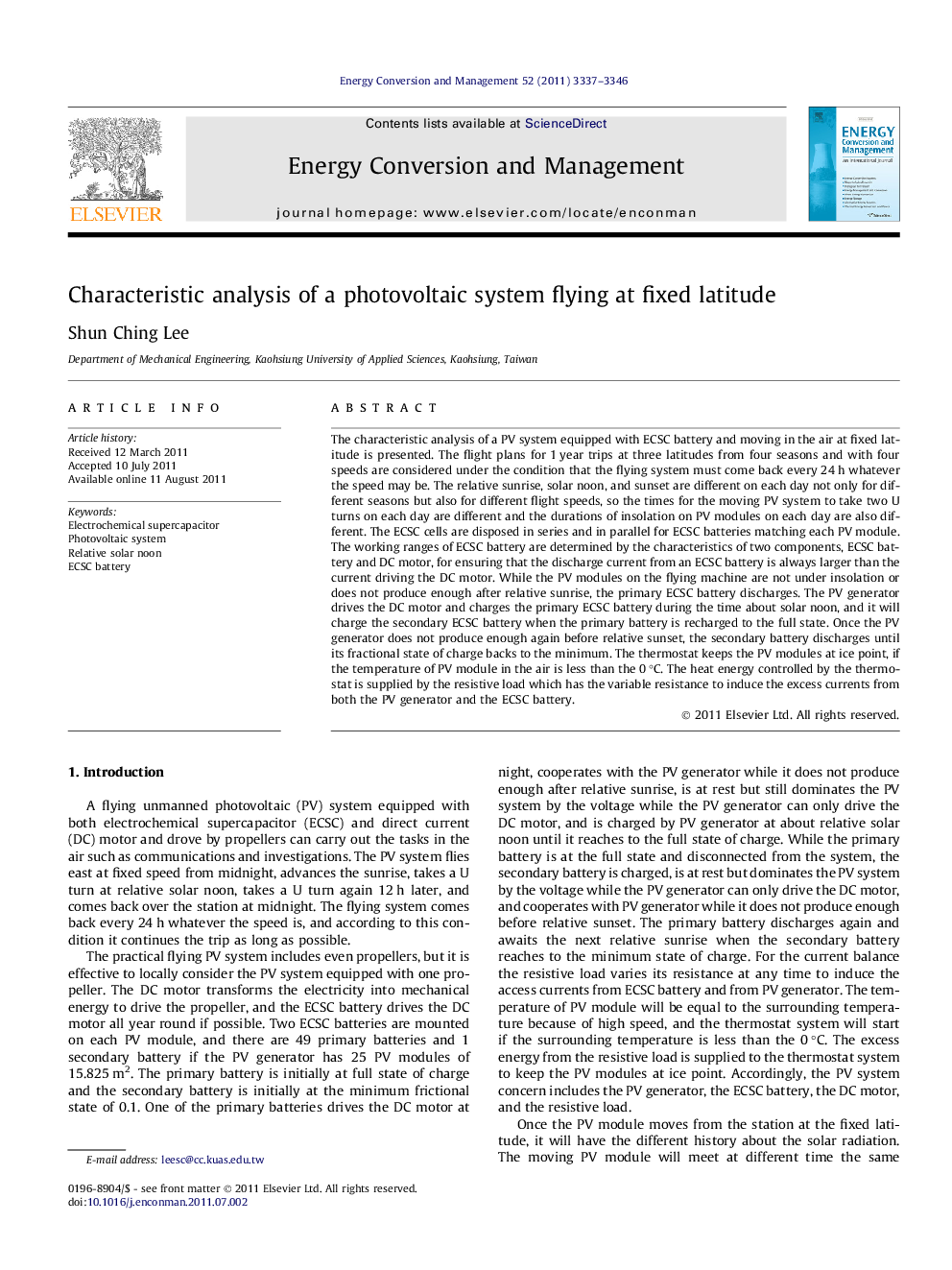| کد مقاله | کد نشریه | سال انتشار | مقاله انگلیسی | نسخه تمام متن |
|---|---|---|---|---|
| 761356 | 896621 | 2011 | 10 صفحه PDF | دانلود رایگان |

The characteristic analysis of a PV system equipped with ECSC battery and moving in the air at fixed latitude is presented. The flight plans for 1 year trips at three latitudes from four seasons and with four speeds are considered under the condition that the flying system must come back every 24 h whatever the speed may be. The relative sunrise, solar noon, and sunset are different on each day not only for different seasons but also for different flight speeds, so the times for the moving PV system to take two U turns on each day are different and the durations of insolation on PV modules on each day are also different. The ECSC cells are disposed in series and in parallel for ECSC batteries matching each PV module. The working ranges of ECSC battery are determined by the characteristics of two components, ECSC battery and DC motor, for ensuring that the discharge current from an ECSC battery is always larger than the current driving the DC motor. While the PV modules on the flying machine are not under insolation or does not produce enough after relative sunrise, the primary ECSC battery discharges. The PV generator drives the DC motor and charges the primary ECSC battery during the time about solar noon, and it will charge the secondary ECSC battery when the primary battery is recharged to the full state. Once the PV generator does not produce enough again before relative sunset, the secondary battery discharges until its fractional state of charge backs to the minimum. The thermostat keeps the PV modules at ice point, if the temperature of PV module in the air is less than the 0 °C. The heat energy controlled by the thermostat is supplied by the resistive load which has the variable resistance to induce the excess currents from both the PV generator and the ECSC battery.
► Relative sunrise and noon are different for different flight speeds.
► ECSC cells are disposed for ECSC batteries matching each PV module.
► Working ranges of ECSC battery are determined.
► Secondary ECSC battery is considered.
► Heat energy to thermostat keeps PV modules at ice point.
Journal: Energy Conversion and Management - Volume 52, Issue 11, October 2011, Pages 3337–3346